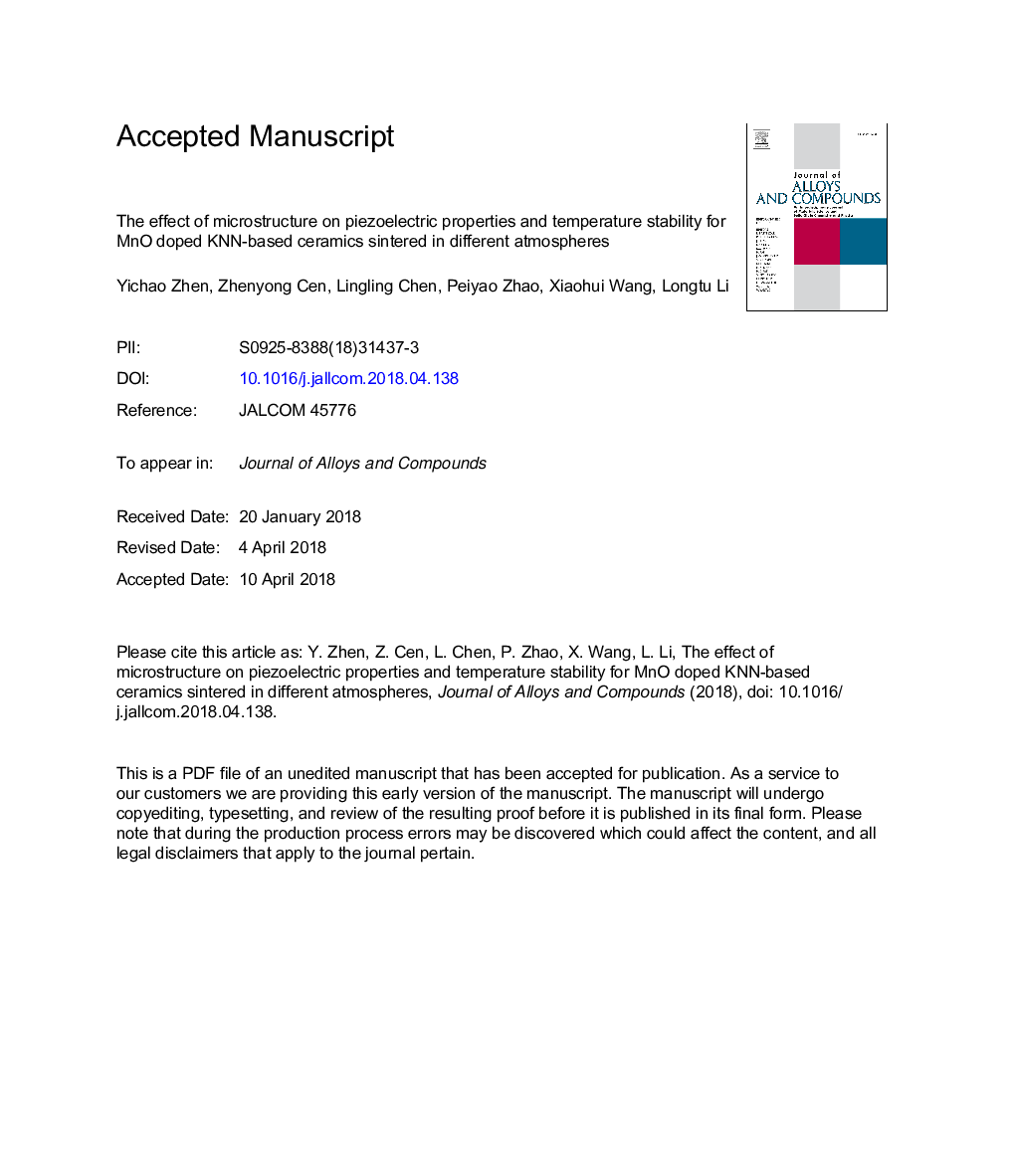| Article ID | Journal | Published Year | Pages | File Type |
|---|---|---|---|---|
| 7991556 | Journal of Alloys and Compounds | 2018 | 23 Pages |
Abstract
Lead-free 0.4% MnO doped 0.955K0.5Na0.5NbO3-0.045Bi0.5Na0.5ZrO3 (Abbreviated as 0.955KNN-0.045BNZ) ceramics were prepared by a conventional solid-state sintering method in both ambient air and reducing atmosphere (H2/N2/H2O, oxygen partial pressure po2 â¯=â¯1â¯Ãâ¯10â10 atm). All samples show a polymorphic phase boundary (PPB) with rhombohedral (R)/tetragonal (T) phase. The R phase fraction of ceramics sintered in reducing atmosphere is higher than that of ceramics sintered in ambient air. The valence state of almost all of the Mn ions are +2 for the ceramics sintered in reducing atmosphere. Mixed valence states (+2, +3, +4) of Mn ions coexist in the 0.4% MnO doped 0.955KNN-0.045BNZ ceramic sintered in air. The formation of dipolar defect (MnNbâ²-Vo·· and MnNbâ³-Vo··) in poled ceramics sintered in air is due to the substitution of Nb5+ ions with Mn3+ ions and Mn4+ ions. The ceramics sintered in air show strong dielectric diffusion behavior under electric field (35â¯kV/cm) due to the existence of (â¼200â¯nm) sub-micrometer domains with high activation energy. Nanoscale domains (â¼90â¯nm) in ceramics sintered in reducing atmosphere is the origin of its high piezoelectric properties.
Related Topics
Physical Sciences and Engineering
Materials Science
Metals and Alloys
Authors
Yichao Zhen, Zhenyong Cen, Lingling Chen, Peiyao Zhao, Xiaohui Wang, Longtu Li,
